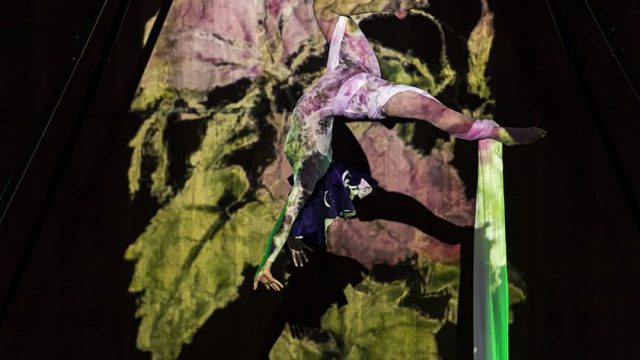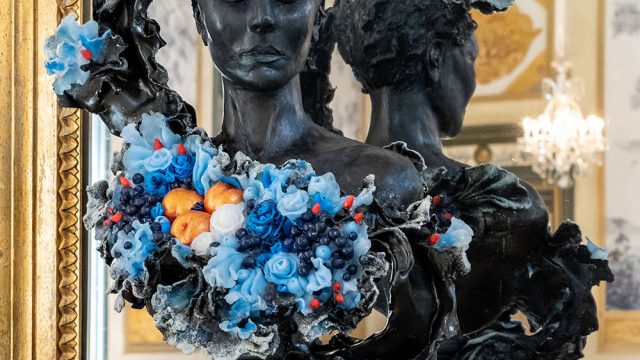The Cabinets. An installation by Helmut Völter. On display in the lunchroom of the V&A, September 17-23.
The Cabinet with the number 54, category “Remember,” shows the photograph of a windmill, of a bird in flight and of a mathematical model. It is one of 13 cabinets that form together my installation “The Cabinets,” which is part of this year’s London Design Festival.
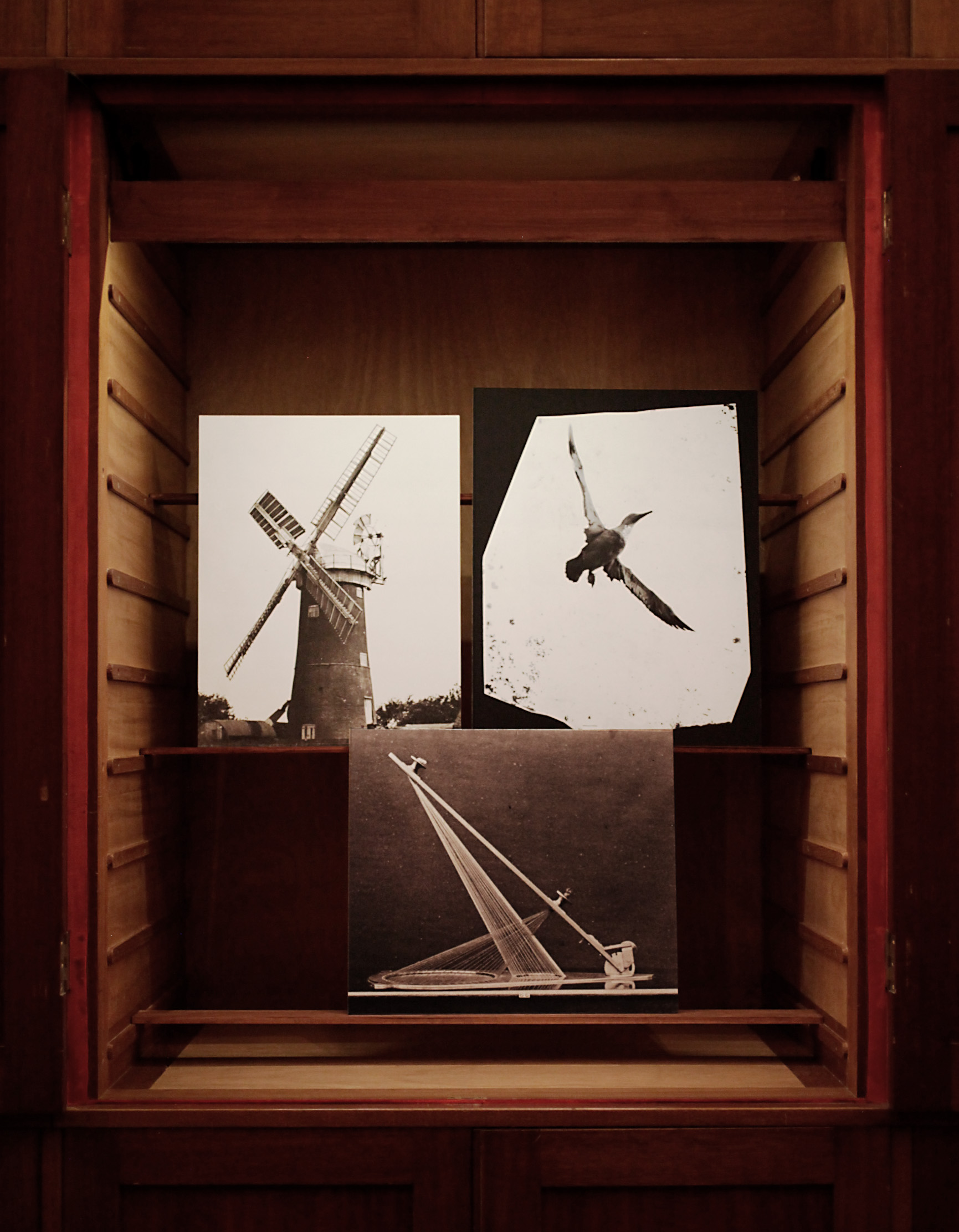
What is the link between these photographs? There is a strong aesthetic connection, all of them show a striking diagonal. And then there is the suggestion of a story: How the observation of nature leads to knowledge that is being transferred into science and architecture.
All three photographs (and all images of the installation) belong to the V&A photography collection, which I explored during my residency. There are a part of the collection that is normally less in the focus: photographs that were not taken for artistic reasons, but for science, documentation, education or as a reference. The V&A has not only a long history of collecting photography, but also of working with photography, and the double status of these images as ‘tools’ as well as aesthetic objects was the core of my interest.
Cabinet 52, category “Release,” shows four images of windmills, taken by the same photographer as the one in cabinet 54. Rex Wailes was an egineer and historian, and also an expert on windmills. He started to document English windmills in the 1920s, when many of them were going out of use.
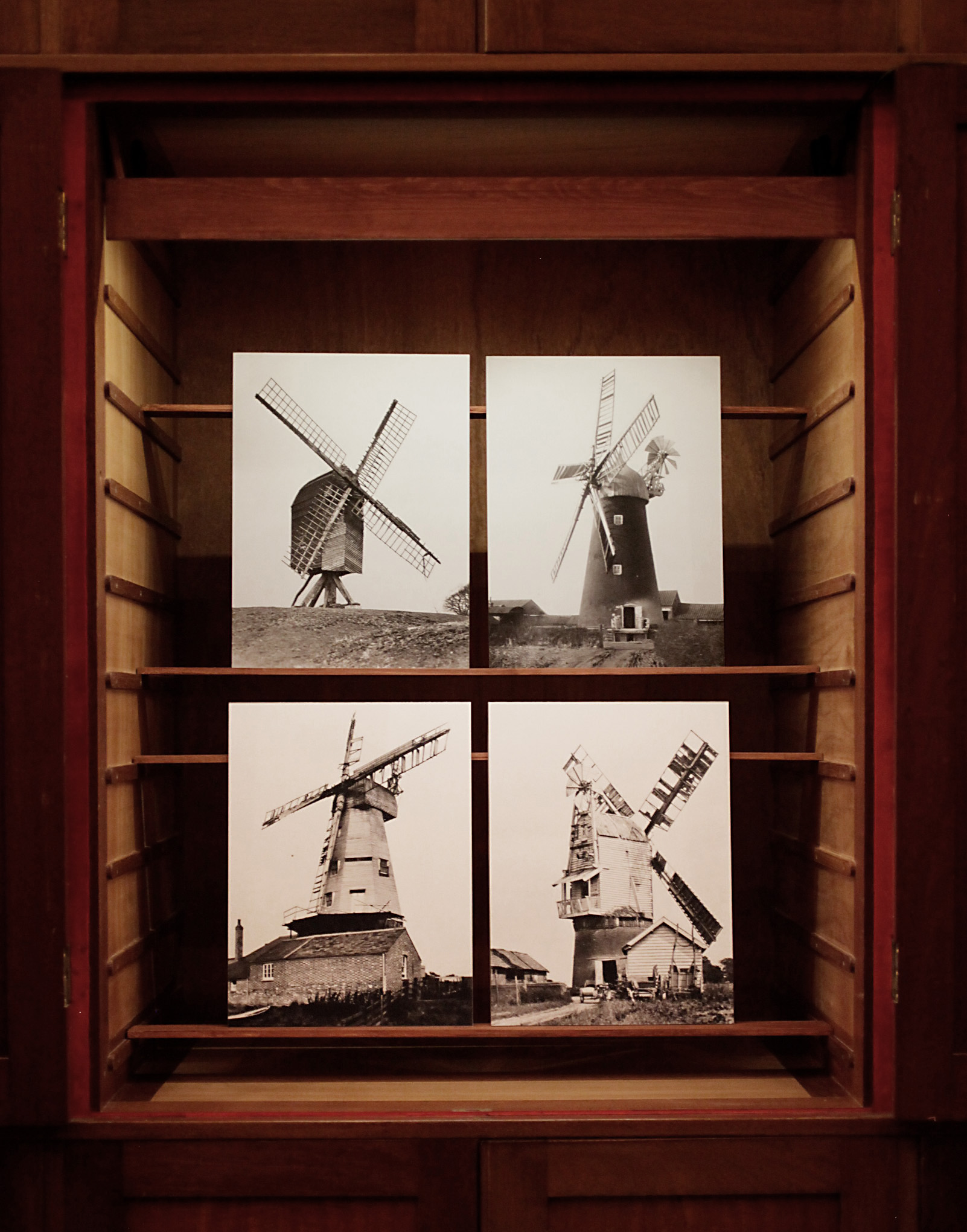
If you have closer look at these photographs, you can see that some of the windmills are already abandoned, even start to detoriate. Therefore, what looks at first sight as a purely technical record, becomes a document of mourning, of the urge to hold onto something that is doomed to fall apart and disappear.
The photographs in cabinet 44, category “Move,” show the portrait of a woman, a detail of the cracks of a painting, and a brick wall. The identity of the woman is unknown, as is the photographer.
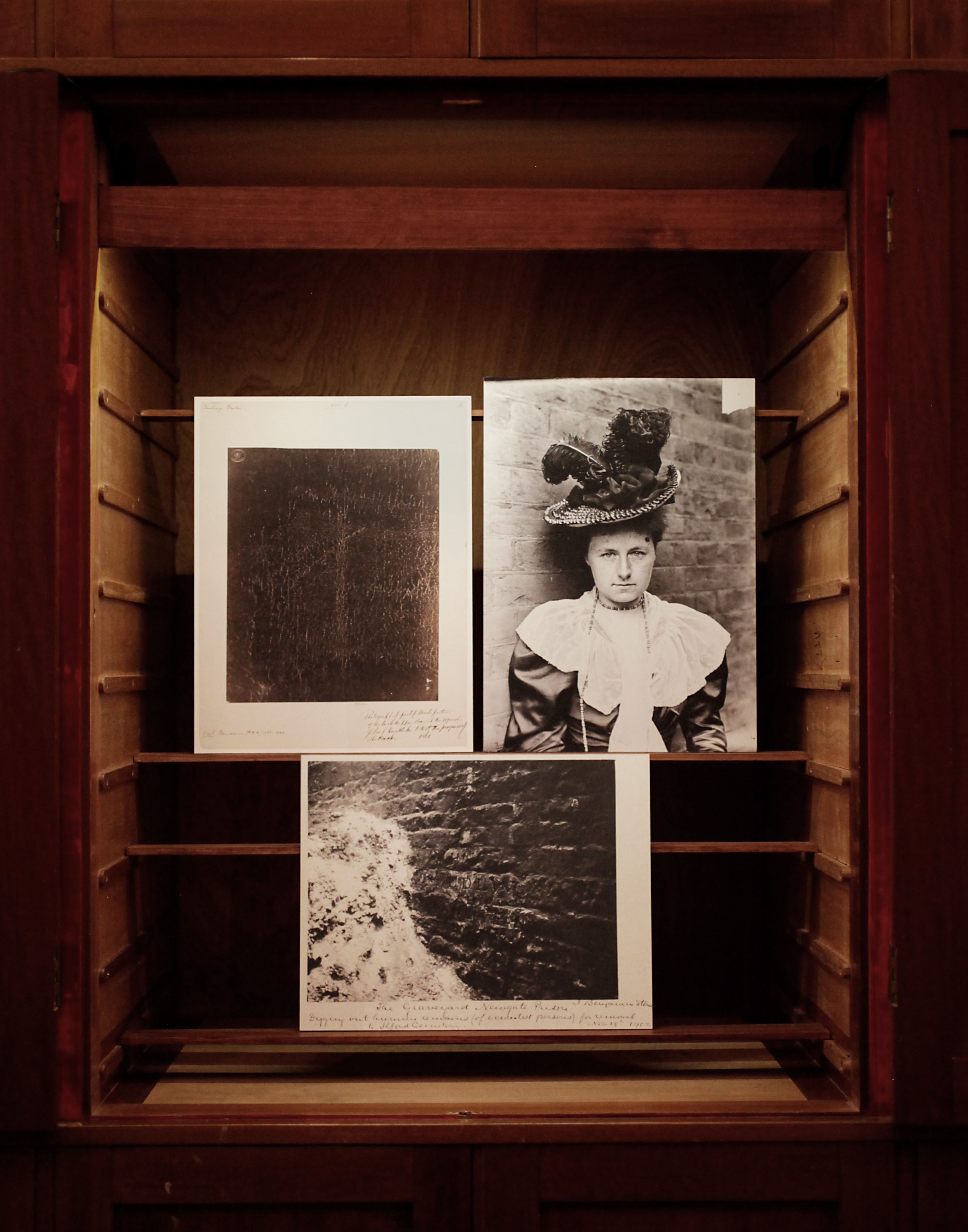
The painting is „The Last Supper“ by Benjamin West. The photograph has been made to document its condition. Altough it was taken only to be used in a conservation report, it has a a great abstract quality. Furthermore, there is an interesting confusion about the medium and its content: Are these really the cracks of the paiting, or are these maybe fractures of the photographic surface? The brick wall, at last, mirrors the surface of the painting, its wrinkles and cracks.
The cabinets that I used as stages for photographs were built in the 1950s to house parts of the V&A textiles’ archive. On the sides, you can see the wooden strips that held the drawers. There are 210 cabinets in the Prince Consorts Gallery, as the lunchroom is officially called. Their initial function as an archive inspired me to playfully revive the era when photographs were physical objects (and not just digital data) that had to be stored according to a given system of categories.
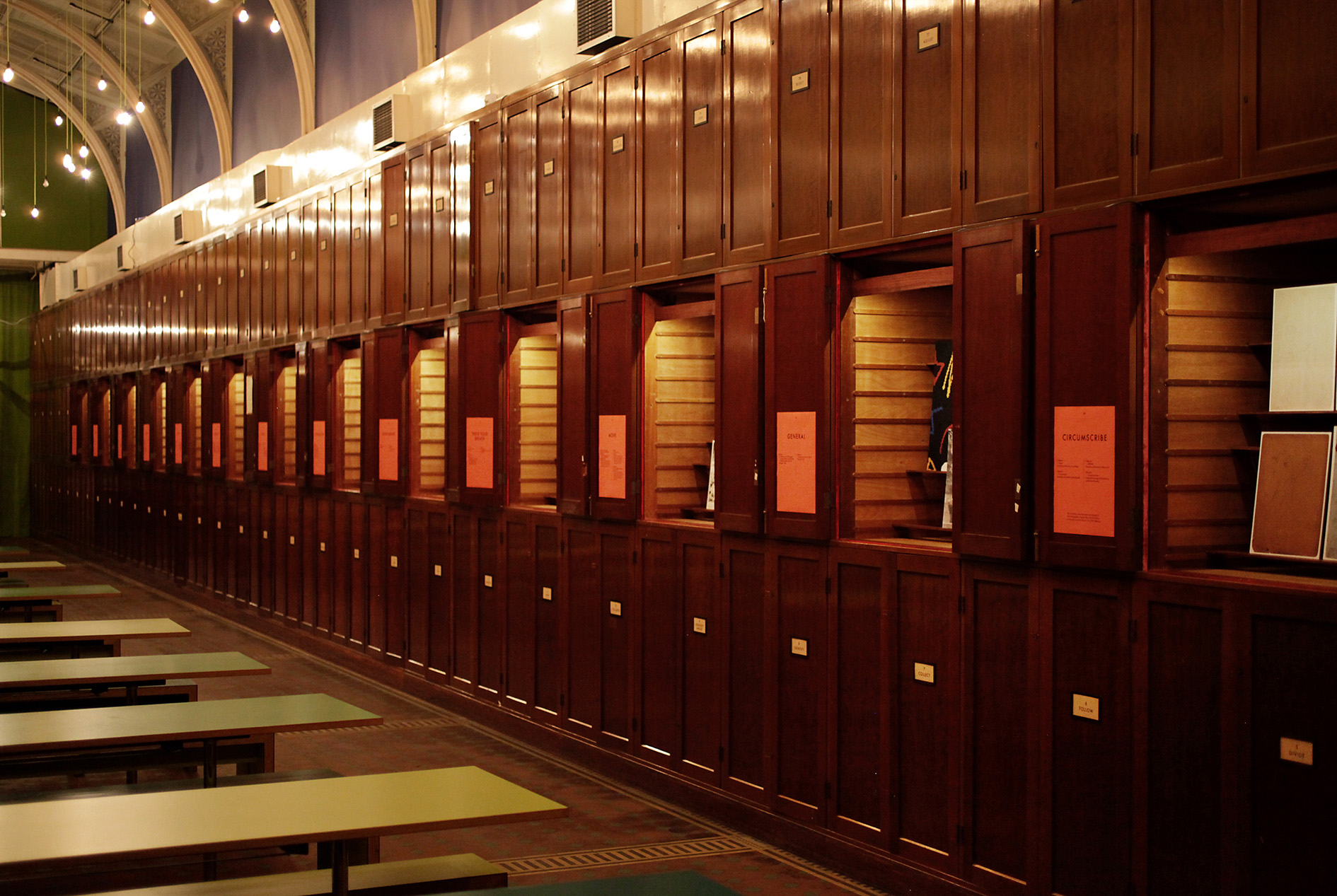
Instead of using categories that are familiar to sort photographs (portrait, reportage, black and white, etc.) I gave every cabinet a category that came out of a poetic play with words. Some address the reader (Wait), some seem to be reminders for the archivist (Identify, Crop), others might be emotional reactions to certain images (Hold Your Breath). To extend this play, I have given categories to the closed cabinets as wall – what images could be found in the categories Straight Ahead, or Silver? This is an invitation for the visitors to imagine further image constellations, but it is also a reminder that the number of images on display are just a tiny fraction of what can still be discovered in the collection.
Helmut Völter
All images in the installation are facsimile prints of photographs or objects from the V&A collection.
Many of the photographs on display are part of ongoing research into photographs collected by the National Art Library between 1853 and 1977, an endeavour led by Ella Ravilious, curator in the museum’s Word & Image department.
The installation was made with the help of Lanre Akinwunmi, Laura Carderera, George Eksts, Ella Ravilious, Vivien Sadeghi and Kate Quinlan.
In collaboration with the Goethe-Institut London.

